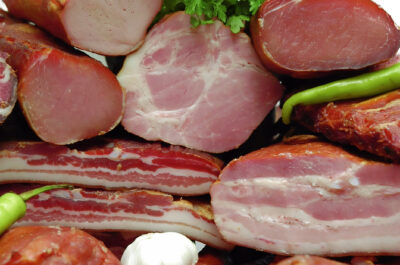Kaiser Permanente Northwest conducted a study to find out how risk factors for people with type 2 diabetes affected the chances of hospitalization and possible death. The study involved 26,636 patients with type 2 diabetes. The patients were part of an HMO and had records of their A1(c), systolic blood pressure, and LDL-Cholesterol measurements on file. The study was conducted for 5.6 years. The measurements defined patients in control with an A1(c) of <7%, systolic blood pressure of 130 mmHg (upper number in a blood pressure reading), and an LDL of (<100 mg/dl). These numbers allowed them to establish a baseline of those patients with and without risk factors for Coronary Vascular Disease (CVD).
The study showed that patients with (Cholesterol, BP, and Diabetes) that were above normal readings, had the highest rate of admissions for Coronary Vascular Disease. Those who had all three risk factors under control had the lowest rate of admission. Those who had 2 risk factors out of control such as blood pressure and A1(c) had a similar rate of admission as those with all three out of control. What the study concluded is that physicians and persons with type two diabetes need to address other key areas besides the A1(c). These included maintaining LDL cholesterol levels and blood pressure to avoid hospitalization.[1]
If you are a diabetic and you are worried about lowering your LDL cholesterol here are 5 foods recommended by the Mayo Clinic that will help:
- Oatmeal, oat bran, and high fiber foods
- Fish and Omega 3 fatty acids (highest Omega 3 fatty acids are in Mackerel, Lake trout, Herring, Sardines, Albacore Tuna, Salmon, and Halibut). You can also use fish oil to supplement this. Make sure you back or grill the fish.
- Walnuts, Almonds, and other nuts (walnuts, peanuts, pecans, pine nuts, pistachio, and hazelnuts)
- Olive Oil- about 2 tablespoons (23 grams) of olive oil a day. Can be used as a substitute for butter or in salad dressing. Olive Oil is high in calories so it is not recommended to go over the recommended amount.
- Other foods include those rich in sterols or stanols. [2]
Make sure that you avoid or cut back on foods that are high in trans fats. These include those found in cookies, crackers and cakes. In addition you want to cut back on how much saturated fat you eat. Saturated fat is found in meat, full dairy products, and some oils. If you are looking for an oil to cook with consider canola oil. Finally if your cholesterol is high consider talking with your doctor about medication to keep it under control and consider regular appointments to monitor this.
One other thing that many people do not know is that adding grape juice to your diet can help raise your HDL levels or good cholesterol. Grape juice has been known to have the same benefits as red wine in fighting heart disease. [3] If you want to address blood pressure, and cholesterol, grape juice does both.
The benefits of grape juice include:
- Reducing the risk of blood clots
- Reducing low-density lipoprotein (LDL, or “bad”) cholesterol
- Preventing damage to blood vessels in your heart
- Helping maintain a healthy blood pressure
You can do more than just drink juice. The Mayo clinic recommends eating grapes as well. Grapes have many healthy benefits and have been the subject of many studies concerning health.
Ways to lower your blood pressure include:
- Lose weight- men on average should not have a waist line that exceeds 40 inches and women should not exceed 35 inches.
- Exercise daily- recommendations can be from 15- 60 minutes depending on the study.
- Maintain a healthy diet
- Reduce your sodium in your diet
- Limit the amount of alcohol you drink
- Avoid tobacco and second hand smoke
- Cut back on caffeine
- Reduce your stress- this can be done with exercise, but can also involve counseling[4]
- Monitor your blood pressure- record it on a daily basis at the same time if possible
- Get support from family and friends
If you have high blood pressure medication may be prescribed. Don’t rely on medication as a sole solution. Lifestyle change is very important in assuring a healthy life regardless of your risk factors.
[1] Nichols, Gregory, Sandra Joshua-Gotlib, Shreekant Parasuraman. Independent Contribution of A1(c), Systolic Blood Pressure, and LDL Cholesterol Control to Risk of Cardiovascular Disease Hospitalizations in Type 2 Diabetes: An Observation Cohort Study. Journal of General Internal Medicine. Jan. 24, 2013. http://link.springer.com/article/10.1007/s11606-012-2320-1/fulltext.html
[2] Cholesterol Top 5 Foods to Lower Your Numbers. Mayo Clinic. http://www.mayoclinic.com/health/cholesterol/CL00002
[3] Grogan, Martha, MD. Does Grape Juice Offer the Same Benefits as Red Wine? Nutrition and Healthy Eating. Mayo Clinic. http://www.mayoclinic.com/health/food-and-nutrition/AN00576
[4] Ten Ways to Control High Blood Pressure. Mayo Clinic http://www.mayoclinic.com/health/high-blood-pressure/HI00027


